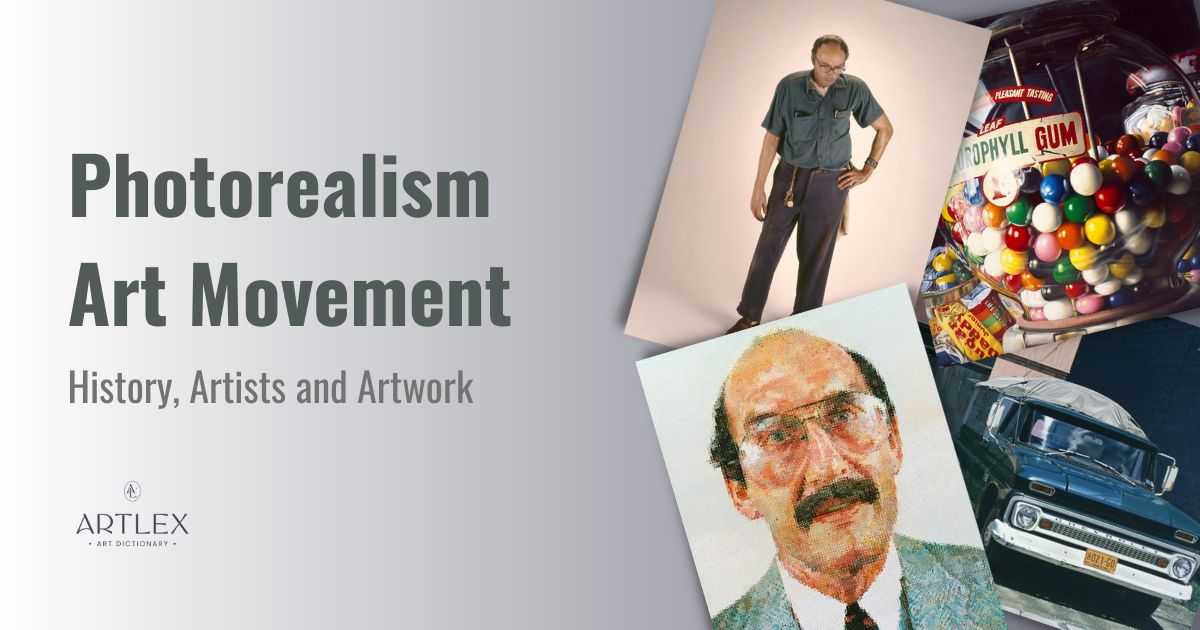What is Photorealism?
Photorealism refers to visual art that is based on a photograph, where the subject of that photograph is reproduced in painstaking detail through painting, sculpture, or other media. Photorealism often refers to an American art movement that began in the late 1960s, but artists in Europe were also creating Photorealist art around the same time. From the 1970s onward, the term Photorealism was also used more broadly within the visual arts to describe a genre of artwork that was highly realistic.
Notable Photorealist Artwork
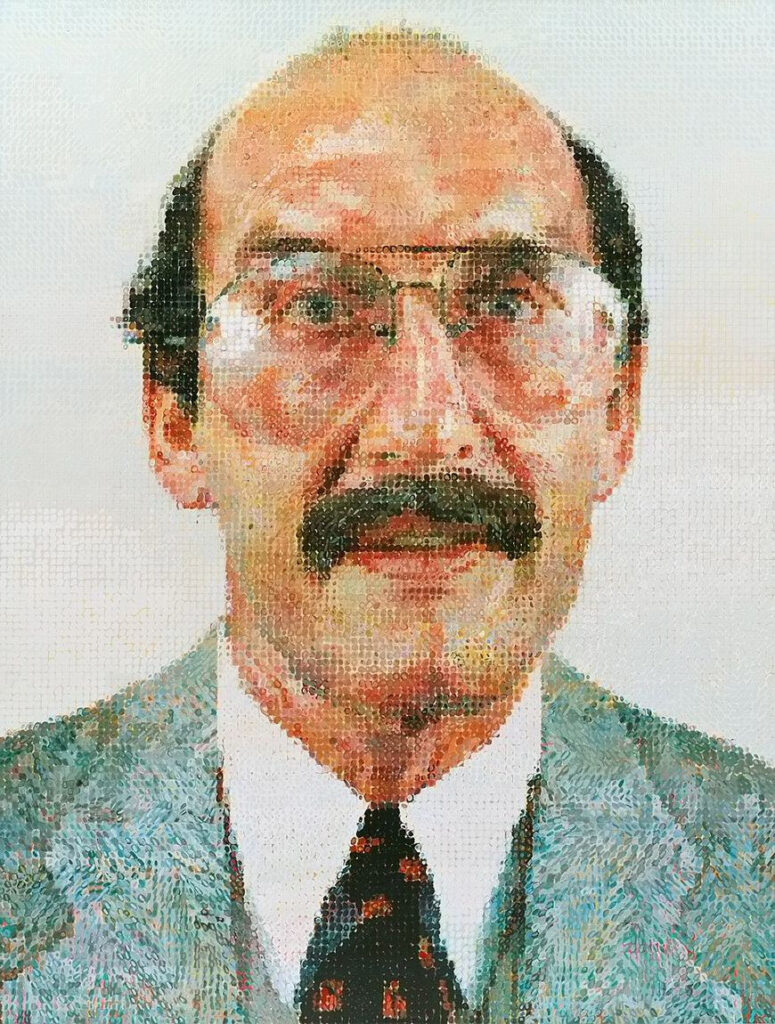
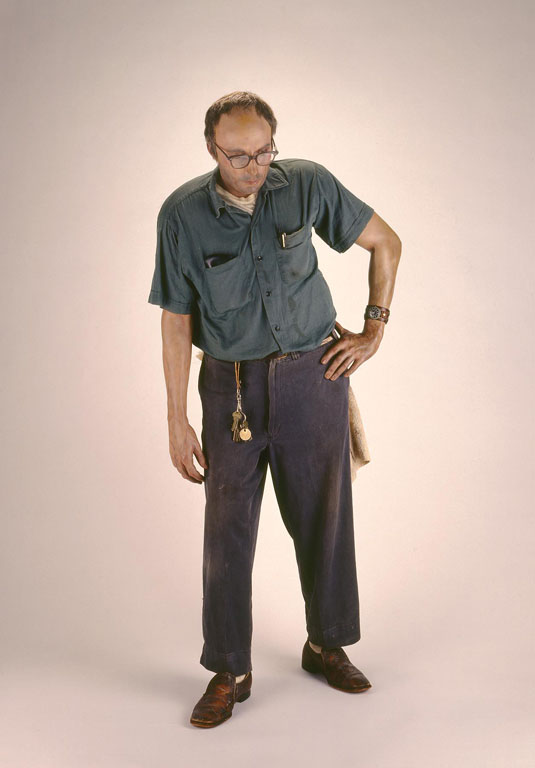
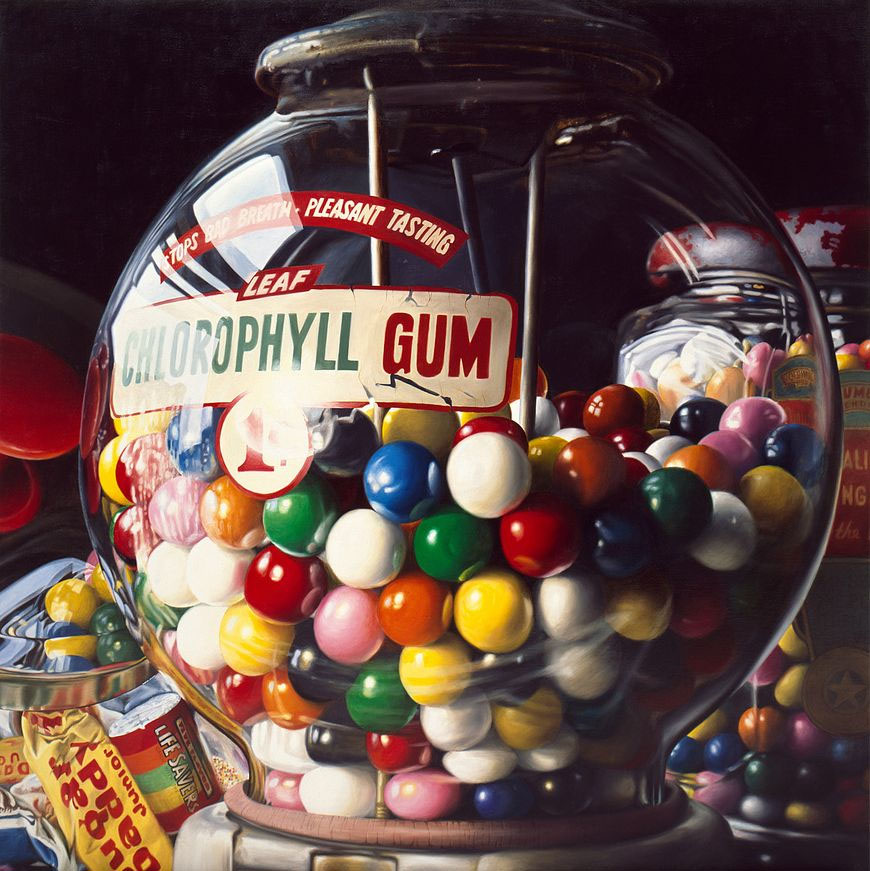
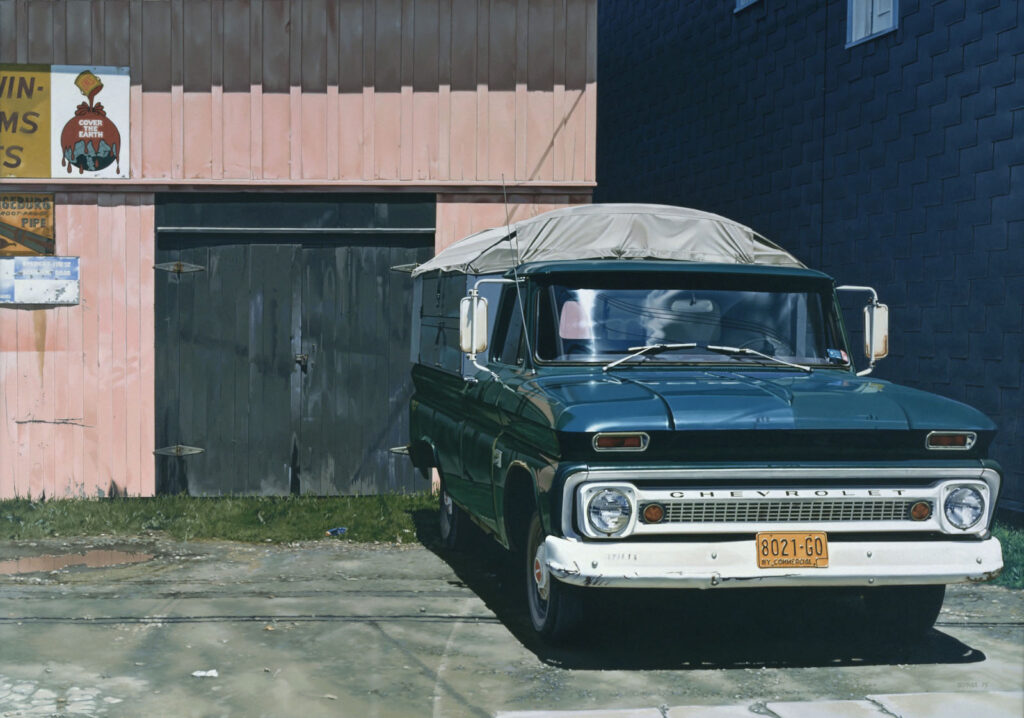
History of Photorealism
In the late 1960s, Photorealism emerged in the United States as a reaction to Abstract Expressionism. Photorealist artists valued realism and rejected the notions of abstraction and idealism popular in visual arts.
Much like Pop artists, Photorealists valued deliberate planning as part of their process rather than spontaneity, improvisation, and automatism.
Photorealism is also known as Hyperrealism, New Realism, Sharp Focus Realism, and Superrealist painting—names that were all conceived to describe the work of many artists who used photographs as references for their highly realistic artwork. While Photorealism was seen as avant-garde, its exacting processes nodded to the traditional techniques of academic art valued nearly a century earlier.
American author and art dealer Louis K. Meisel is credited with coining the term Photorealism in 1969. In 1970, Meisel used the term to label artwork in an exhibition at the Whitney Museum in New York City. In 1972-73, Meisel developed a definition of Photorealism that included five central criteria:
- The Photo-Realist uses the camera and photograph to gather information.
- The Photo-Realist uses a mechanical or semi-mechanical means to transfer the information to the canvas.
- The Photo-Realist must have the technical ability to make the finished work appear photographic.
- The artist must have exhibited work as a Photo-Realist by 1972 to be considered one of the central Photo-Realists.
- The artist must have devoted at least 5 years to the development and exhibition of Photo-Realist work. [1]
These criteria defined the first and second generations of Photorealist artists. American artist Chuck Close, for example, was a first generation Photorealist artist.
Themes in Photorealist Art
Many famous Photorealist artists made Photorealistic paintings that demonstrate an interest in objects of industry and machinery such as cars, motorcycles, and trucks. In Sherwin Williams Chevy, from 1975, Ralph Goings painted a deep blue Chevrolet truck parked in front of a Sherwin Williams store with such precision that the viewer could easily mistake it for a photograph; a common occurrence in Photorealistic painting.
Mechanical objects that reflected leisure and popular culture were also seen as subject matter in Photorealist art, such as artist Charles Bell’s Photorealist painting, Gum Ball No. 10: “Sugar Daddy,” from 1975. Much like Pop art, the Photorealist movement explored the obsessions and pass times of American culture.
However, Photorealism did not encompass the same intentional criticism of American culture as the Pop art movement. Though many Photorealist works are filled with American mass and consumer culture icons, such as fast food restaurants and mechanical objects, they were not typically critical of those icons within a socio-political context.
In the 1960s and 1970s, and until quite recently, male Photorealist artists were given the most recognition. Audrey Flack is among the few female artists recognized alongside her male contemporaries as a first generation Photorealist artist. Flack’s artwork follows similar themes and explores the world of objects through still life painting and later sculpture. Her work also went beyond being purely observational and made connections between objects from the past and those of her present while challenging stereotypical and archetypal representations of women.
The Use of Photography in Photorealist Art
Artists have used the camera as a tool in visual art since the advent of photography in the early 1800s. In fact, the early image-making technique afforded by the camera obscura and camera lucida was common in the 1600s among the Old Master painters such as Rembrandt and Vermeer.
As precursors to modern cameras, the camera obscura and camera lucida projected an image onto an interior panel. The image was then traced and painted, becoming many of the masterpieces we know today.
The evolution of image-making helped artists study their subjects in a way that direct observation could not. Through projection and photography, the subjects of portraits, among other fleeting instances, could be frozen in time and revisited at the artist’s convenience.
However, the dependence of photography was largely frowned upon until Photorealists reclaimed it as a vital part of their artistic processes. While earlier artists would hesitate to reveal the use of photographic references, Photorealist artists aimed to replicate the effects of photography through another medium. This technique challenged traditional artistic processes along with the differences between what is “real life” and what is artificial.
Many artists working in the genre of Photorealism in the 1960s onward used film slides to project images onto their canvases. Using projections as guides for their painting processes meant that Photorealist artists were also considering the relationship between light and color, where film projections united both as a single element.
Photorealistic Sculpture
Photorealism is typically associated with painting but sculptors such as Duane Hanson demonstrate a branch of Photorealist art called Verism. Hanson’s sculptures are often lifelike reproductions of average people. Janitor, from 1973, is a painted sculpture of a janitor that includes real hair and clothes.
Unlike other Photorealists, Hansen’s artwork usually reflects social and political issues. His Janitor sculpture highlights the often overlooked heroic nature of everyday people in American society. Much like the earlier Realist movement, Hansen elevates people in the working class by bringing their likeness into the art world. Hansen depicts this particular subject without idealization, even making it so that the sculpture must lean on a wall to stay upright.
Photorealism Today
The original Photorealist artists developed techniques that not only troubled the definition of art but remain vital to contemporary art. The seemingly limitless capabilities of digital technology allows artists to use photography and other digital imaging tools to explore the line between reality and artificiality in a whole new way.
Today’s photorealistic art echoes society’s ever-evolving fascinations and flaws, such as the Internet, social media, and the adverse effects of capitalism. It also celebrates marginalized voices and even blends with the surreal.
American artist Kehinde Wiley’s paintings feature contemporary subjects and icons like Barak Obama. The famous portrait shows Obama seated against a surreal background of lush greenery. Wiley’s use of photorealism, symbolism, and the 44th president of the United States engages the viewer in a centuries’ old conversation about politics, race, and art. Wiley’s work is one of many examples of how Photorealism finds its place in contemporary art.
References
[1] Meisel, Louis K. Photorealism. Harry N. Abrams, Inc., Publishers, New York. 1980. p. 13.
Notable Photorealist Artists
- Chuck Close, 1940-2021, American
- Carolyn Brad, 1937-2005, American
- Audrey Flack, b. 1931, American
- Richard Estes, b. 1932, American
- Hilo Chen, b. 1942, Taiwanese-American
- Ralph Goings, 1928-2016, American
- Duane Hanson, 1925-1996, American
- Don Eddy, b. 1944, American
- Idelle Weber, 1932-2020, American
- Linda Bacon, b. 1942, American
- Robert Bechtle, b. 1932, American
- Robert Cottingham, b. 1935, American
- Roberto Bernardi, b. 1974, Italian
- Franz Gertsch, b. 1930, Swiss
- Raphaella Spence, b. 1978, English
- Bertrand Meniel, b. 1961, France
- Arinze Stanley Egbengwu, b. 1993, Nigerian
- Calida Rawles, b. 1976, American
- Kehinde Wiley, b. 1977, American
Related Art Terms
- Trompe l’oeil
- Realism
- Photography
- Pop art
- Minimalism
- Conceptual art
- Still life
- Kitsch
- Contemporary art

